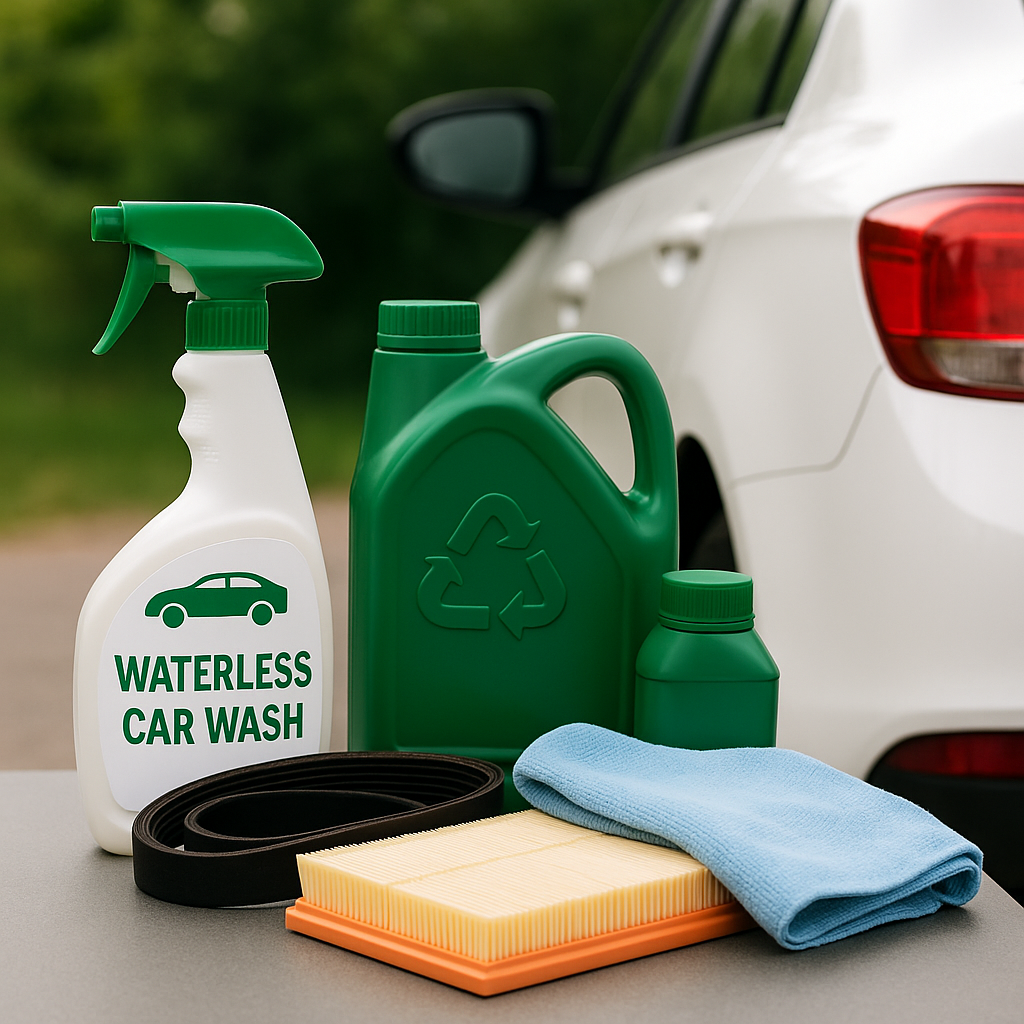Introduction: Why Eco-Friendly Car Care Matters
Eco-Friendly Car Maintenance Tips for Every Driver. In today’s climate-conscious world, driving responsibly isn’t just about obeying the speed limit—it’s about how we maintain our vehicles. Most drivers don’t realize that the way we care for our cars can either harm or help the environment. From routine oil changes to tire pressure checks, small tweaks in your maintenance habits can reduce emissions, save money, and prolong your vehicle’s lifespan.
When I first started driving my 2012 Toyota Corolla, I never thought twice about how my habits affected the planet. But after learning about the carbon footprint of neglected vehicles, I realized every driver can make a difference with just a few simple shifts. This article is for those who love their car and their planet equally.
Table of Contents
1. Regular Maintenance Reduces Emissions
Skipping regular check-ups isn’t just bad for your engine—it also leads to higher pollution. A poorly maintained engine burns more fuel and emits more harmful gases. According to the U.S. Department of Energy, keeping your engine properly tuned can improve gas mileage by up to 4%.
Real Tip: Schedule a maintenance check every 5,000 to 7,500 miles. Mechanics can catch worn spark plugs, dirty filters, or malfunctioning oxygen sensors—issues that increase fuel consumption.
Personal Example: Last year, I noticed a sudden drop in mileage. A quick tune-up revealed a clogged air filter. Replacing it cost under $30 but improved my fuel economy by 10%.
2. Choose Eco-Friendly Motor Oils and Fluids
Standard motor oils can be harmful to the environment when disposed of incorrectly. Now, more brands offer re-refined oils and biodegradable fluids that perform just as well without the toxic impact.
Look for certifications like the American Petroleum Institute’s (API) “Energy Conserving” label or the Environmental Protection Agency’s (EPA) Safer Choice label. These ensure your motor oil is both effective and eco-conscious.
Why It Matters: Used oil dumped improperly contaminates water supplies and soil. The EPA reports that just one gallon of used motor oil can ruin a million gallons of fresh water.
3. Keep Your Tires Properly Inflated
Under-inflated tires cause your car to work harder, burn more fuel, and emit more pollutants. The National Highway Traffic Safety Administration (NHTSA) says that properly inflated tires can improve fuel efficiency by about 3.3%.
Quick Tip: Check your tire pressure monthly. Invest in a quality digital tire gauge—it’s a small tool that makes a big difference.
From Experience: I installed nitrogen in my tires during a long summer trip. It maintained pressure longer than regular air and slightly improved fuel efficiency. While nitrogen isn’t necessary for everyone, consistent pressure checks are.
4. Wash Your Car the Green Way
Traditional car washes waste gallons of water and often use detergents harmful to local ecosystems. Instead:
- Use biodegradable car soaps.
- Wash on your lawn to allow water to filter naturally into the ground.
- Consider waterless car wash sprays for quick cleanups.
Some eco-conscious drivers even collect rainwater in barrels to wash their cars. It’s a practical reuse solution and works wonders for light cleaning.
Local Hack: In cities like Austin, Texas, where drought conditions are common, waterless cleaning services are gaining popularity. They save up to 45 gallons of water per wash.
5. Drive Smoothly—It’s Greener
Quick acceleration, heavy braking, and speeding increase fuel consumption drastically. The Carbon Trust estimates that aggressive driving can increase fuel use by up to 40%.
Driving Tip: Anticipate stops and coast when possible. Use cruise control on highways to maintain consistent speeds.
Try This: On my 40-minute commute, I challenged myself to avoid unnecessary braking. The result? Fewer fuel stops and a noticeably smoother ride.
6. Recycle Old Car Parts and Batteries
Tossing used batteries or car parts in the trash isn’t just lazy—it’s illegal in many states. Auto batteries contain lead and acid, which are toxic to the environment.
What to Do:
- Return used batteries to auto shops (many offer discounts for recycling).
- Donate usable parts to local mechanics or car clubs.
- Visit certified recycling centers.
Sites like Earth911 help locate recycling centers near you.
Good to Know: Some car brands now offer buy-back programs for old parts, helping close the loop in the manufacturing cycle.
7. Use Fuel Additives Mindfully
There’s a myth that more additives equal better performance. But excessive use can actually damage your engine and create unnecessary waste.
Better Practice: Use fuel additives sparingly, and only when recommended by your mechanic or manual.
Personal Story: I once used a cheap additive to “boost” my car’s performance before a road trip. It backfired—literally. A mechanic later showed me residue buildup that cost me an extra $150 to clean.
8. Consider an Eco-Friendly Upgrade—When It’s Time
Not everyone can afford an electric vehicle (EV), and that’s okay. You can still drive green with your current car. But when the time comes to upgrade, consider fuel-efficient or hybrid models.
The average hybrid emits about 46% less greenhouse gas than comparable non-hybrids. And contrary to myths, EVs don’t cost more to maintain. According to Consumer Reports, EV owners spend 50% less on maintenance over time.
Conclusion: Small Changes Drive Big Impact
Eco-friendly car maintenance doesn’t require a complete lifestyle overhaul—just thoughtful, consistent habits. By taking care of your vehicle the right way, you’re not only saving money but also preserving the environment for future generations.
Let’s shift gears—literally and metaphorically—toward more sustainable driving habits. Because when every driver takes responsibility, the road becomes cleaner for all of us.
You can find more Automobile content:
https://allinsightlab.com/category/automobiles/

